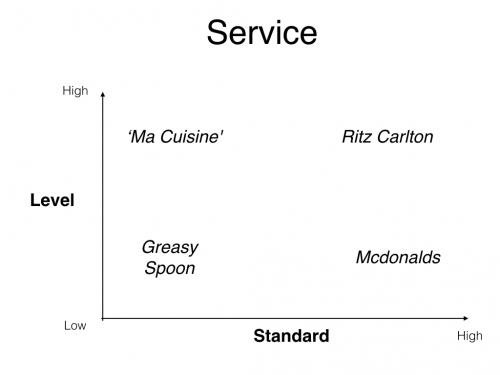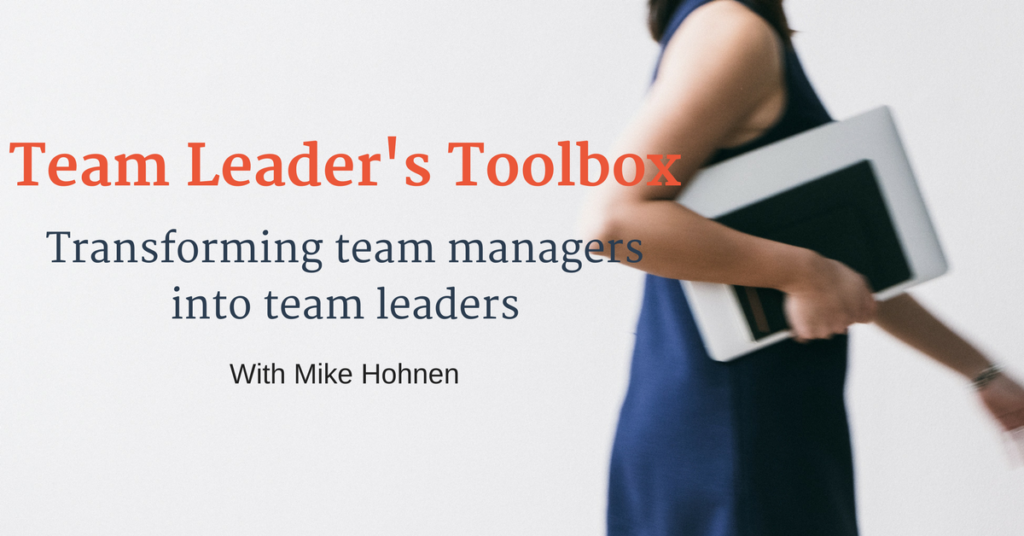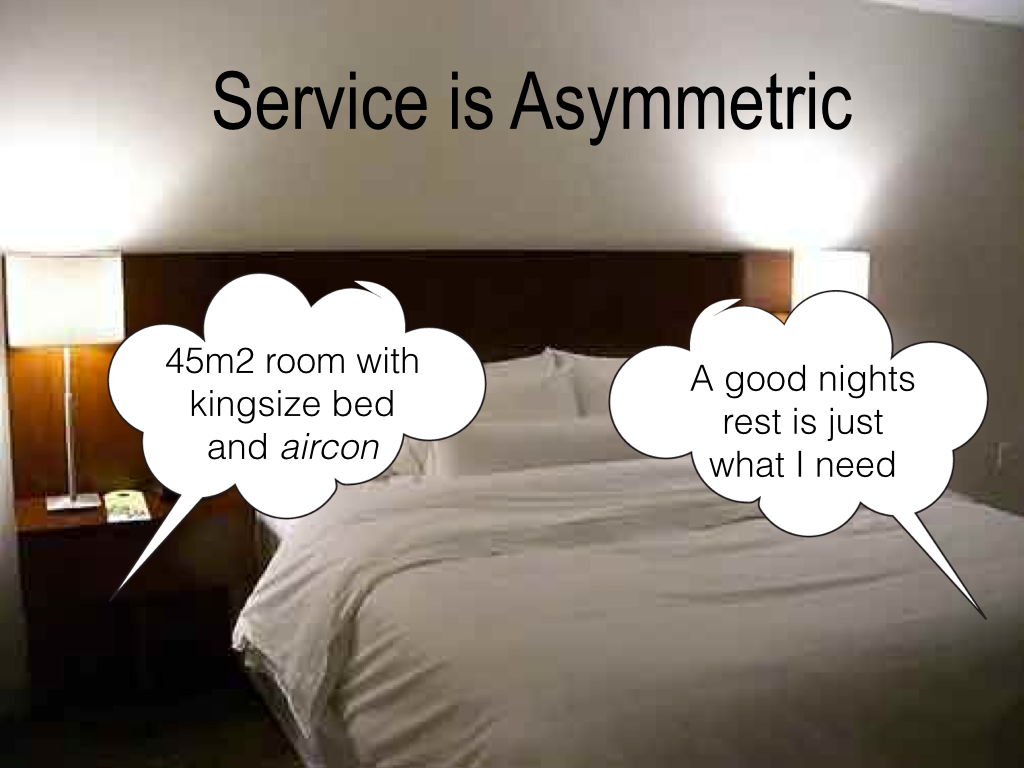
A key part of implementing the Service Profit Chain’s thinking is to work on consistency; in order to do that, we need to have a clear understanding of what the difference is between service levels and service standards.
The easiest way to understand this is to look at a few examples.
Many independent restaurants have high levels of service. But they may not have high standards. On the other hand, McDonald’s has a relatively low level of service, but has very high service standards, while Ritz-Carlton hotels have both high levels of service and high standards of services. And the greasy spoon down the road has neither service levels nor high standards.

Standards are all about consistency. We do things in a certain way, always. Levels of service are all about how much time and effort you put into the delivery process.
Many independent restaurants and other small service businesses go out of business because they lack service standards. Their delivery is inconsistent and creates confusion in the marketplace.
Our level of service needs to fit with our overall value proposition. How much service does this customer segment need and are they willing to pay for it?
Understanding this is crucial to building loyalty.
This blog post is part of a series of answers to frequent questions that I get around the concept of the Service Profit Chain. In future’s posts, we will continue to explore other key points. If you would like the full concept served up in one go, you will find Mike’s book “Best! No need to be cheap if…” HERE.







